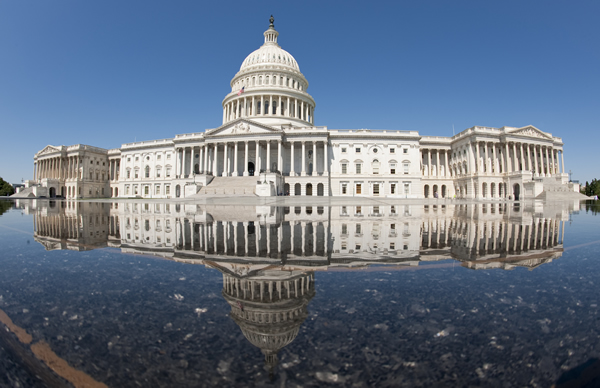As Members of Congress left town last week for the Presidents’ Day break, a refreshing and commendable sentiment followed them: nostalgia for the “regular order” of lawmaking.
“Tired of watching as flailing leadership negotiations fail to produce any key legislation,” wrote The Washington Post, “senior lawmakers hope that a return to the old days of subcommittee hearings and bill markups, floor amendments and conference reports may offer a path forward on everything from immigration to a long-term budget plan.”
The Daily Signal depends on the support of readers like you. Donate now
The Post story included this spot-on assessment by Senate Finance Committee Chairman Max Baucus (D–MT): “We all wish there was more legislating and less messaging.”
Nowhere would a return to normal procedures be more valuable than with the budget. The temporary tax policies of recent years, the debt ceiling debacle of 2011, and the short-term “solution” of last year’s fiscal cliff have only worsened the budgetary dysfunction. Congress now faces across-the-board spending cuts (sequestration) on March 1, another deadline March 27 for funding government operations, and another debt ceiling vote in May. Halfway into the fiscal year, major budget decisions remain in flux. These incoherent practices have yielded no entitlement reform—indispensable for getting deficits and debt under control—but they have produced a $618 billion tax increase.
The House and Senate have not agreed on a budget resolution since April 29, 2009 (though the House has passed budgets the past two years). If current trends continue, the end of the 113th Congress will mark five straight years without a congressional budget. Such a long-standing lapse raises two simple questions to those promoting budget process “reform”: “Why bother?” and “Why not just drop the pretense and abandon congressional budgeting altogether?”
In fact, however, there are two big, fundamental reasons to restore the practice of budget resolutions, appropriations, and reconciliation bills fashioned by committees and completed by the start of the fiscal year.
First, budgeting has always been intrinsic to governing; today, the two are nearly synonymous. “With the Budget Act of 1974, Congress became a dominant force in the formulation of fiscal policy, and a major player in setting national priorities,” writes John A. Marini of the University of Nevada–Reno. The failure to budget has all but emasculated Congress as a policymaking institution, advancing a dangerous drift of power toward the Executive.
Equally important are the immense fiscal challenges looming just a few years ahead. Two weeks ago, the Congressional Budget Office (CBO) warned that the government’s debt held by the public will remain at around three-fourths the size of the economy or above throughout the coming decade—the highest levels of publicly held debt in 60 years—and could approach 90 percent of gross domestic product (GDP) if Congress outspends current projections. Debt at this level would suffocate economic growth.
Three major programs—Medicare, Medicaid, and Social Security—are soaking up about 47 percent of the budget. All three are growing faster than inflation, and—when joined with $1.8 trillion in new Obamacare spending—will, by mid-century, drain roughly 18.5 percent of the nation’s total economic output, the historical average of total federal tax revenue.
These consequences cannot be avoided with some new ad hoc procedure fabricated on the fly. They will require steady, systematic budgeting. Whether Congress can achieve such a restoration this year or next seems problematic, but not hopeless. For example, if lawmakers can, by whatever means, manage to forge a substantial budget agreement, then the details could be run through a regular budget resolution and subsequent implementing legislation. That’s how the 1997 balanced budget agreement was completed. This time lawmakers again should balance the budget—within 10 years and without raising taxes.
The current budget process is far from perfect. It swallows huge amounts of time and energy, and its enforcement measures are too easily breached. Nevertheless, it provides a forum, a schedule, and a set of rules that can guide lawmakers back to responsible fiscal policies. What it takes is the will to make it work.































